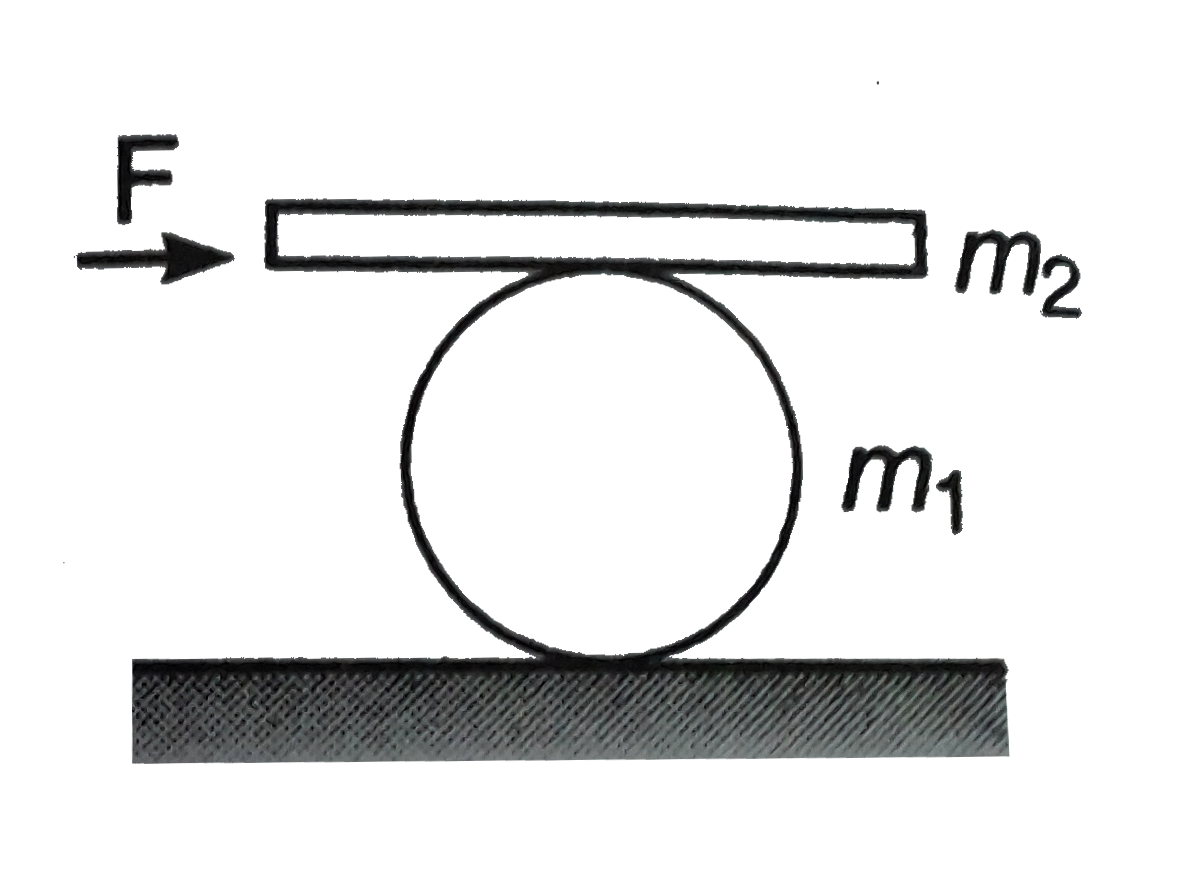
A man pushes a cylinder of mass m1 with the help of a plank of mass m2 as shown. There is no shipping at any contact. The horizontal component of the force applied by the man is F. Find:
(a). the acceleration of the plank and the centre of mass the cylinder and
(b). The magnitudes and direction of frictional forces at contact points.
Analysis of the force F in the horizontal direction on the plank as shwon in figure. Therefore the point of contact of the plank with the cylinder will try to move towards the righ. Therefore, the friction force f will act towers the left on the plank.
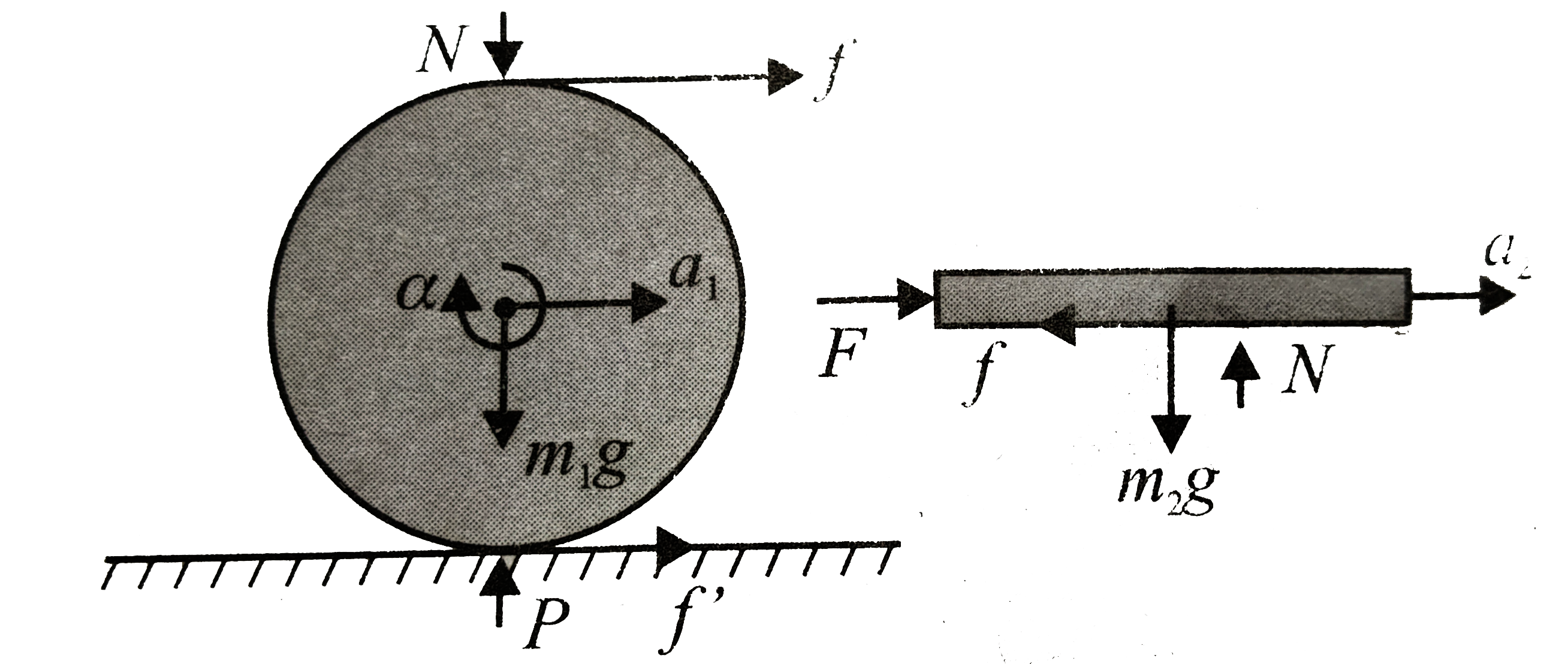
To each and every action, there is an equal and opposite reaction. Therefore, a frictional force of will act on the top of he cylinder towareds the right. Direction of f:
For finding the direction of f' first assume f' is not acting. A force f is acting on the cylinder. This force is trying to move the point of contact towards right by an acceleration aCM=fm1 acting towards the right.
At the same time, the force f is trying to rotate the cylinder about its centre of mass m the clockwise direction.
f×R=I×α⇒α=f×RI=f×R12m1R2=2fm1R
Therefore, acceleration of the point of contact
aP=aCM−αR=fm1−2fm1R×R=fm1
i.e,, towards the left.
Therefore the point of contact of the cylinder with the ground moves towards the left. therefore, fiction foce acts towards the right on the cylinder.
Here k2<Rx as k2=R22
and Rx=R.R=R2
Hence, friction should act in forward direction.
Applying Newton's law on the plank we get
F−f=m2a2.....i
Also a2=2a1....ii
Because a2 is the acceleration of the top most point of the cylinder and there is no slipping. Applying Newton's law on the cylinder.
m1a1=f+f'.........iii
The torque equation for the cylinder is
f×R−f'×R=Iα=12m1R2×(aR)
∵I=m1R2 and Rα=a1
∴1=m1R2 and Rα=a1
∴(f−f')R=12m1Ra1
∴f+f'=12m1Ra1..iv
solving eqn iii and iv we get f=34m1a1 ............v
and f'=14m1a1..........vi
From eqn i and iii F−f=2m2a1
⇒F=34m1a1=2m2a1
∴a1=4F3m1+8m2
∴a2=8F3m1+8m2
From eqn v and vi we get
f=34m1×4F3m1+8m2=3Fm13m1+8m2
and f'=14m1×a1−3Fm3m1+8m2
Topper's Solved these Questions
- BOOK - CENGAGE PHYSICS ENGLISHCHAPTER - RIGID BODY DYNAMICS 2EXERCISE - Exercise 3.111videos
RIGID BODY DYNAMICS 2
- BOOK - CENGAGE PHYSICS ENGLISHCHAPTER - RIGID BODY DYNAMICS 2EXERCISE - Exercise 3.213videos
RIGID BODY DYNAMICS 2
- BOOK - CENGAGE PHYSICS ENGLISHCHAPTER - RIGID BODY DYNAMICS 2EXERCISE - Interger2videos
RIGID BODY DYNAMICS 2
- BOOK - CENGAGE PHYSICS ENGLISHCHAPTER - RIGID BODY DYNAMICS 1EXERCISE - Integer11videos
RIGID BODY DYNAMICS 1
- BOOK - CENGAGE PHYSICS ENGLISHCHAPTER - SOUND WAVES AND DOPPLER EFFECTEXERCISE - Integer16videos
SOUND WAVES AND DOPPLER EFFECT
Similar Questions
A man pushes a cylinder of mass m1 with the help of a plank of mass m2 as shown in figure. There in no slipping at any contact. The horizontal component of the force applied by the man is F.
(a) the acceleration fo the plank and the center of mass of the cylinder, and
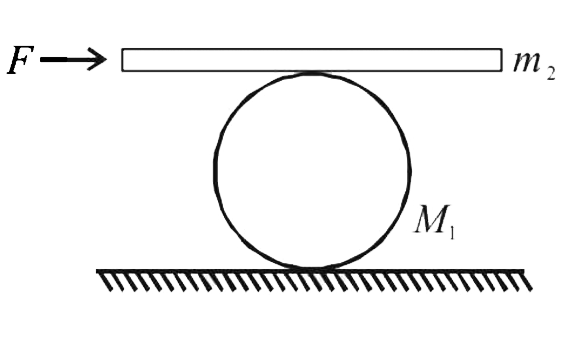
(b) the magnitudes and direction of frictional force at contact points.View Solution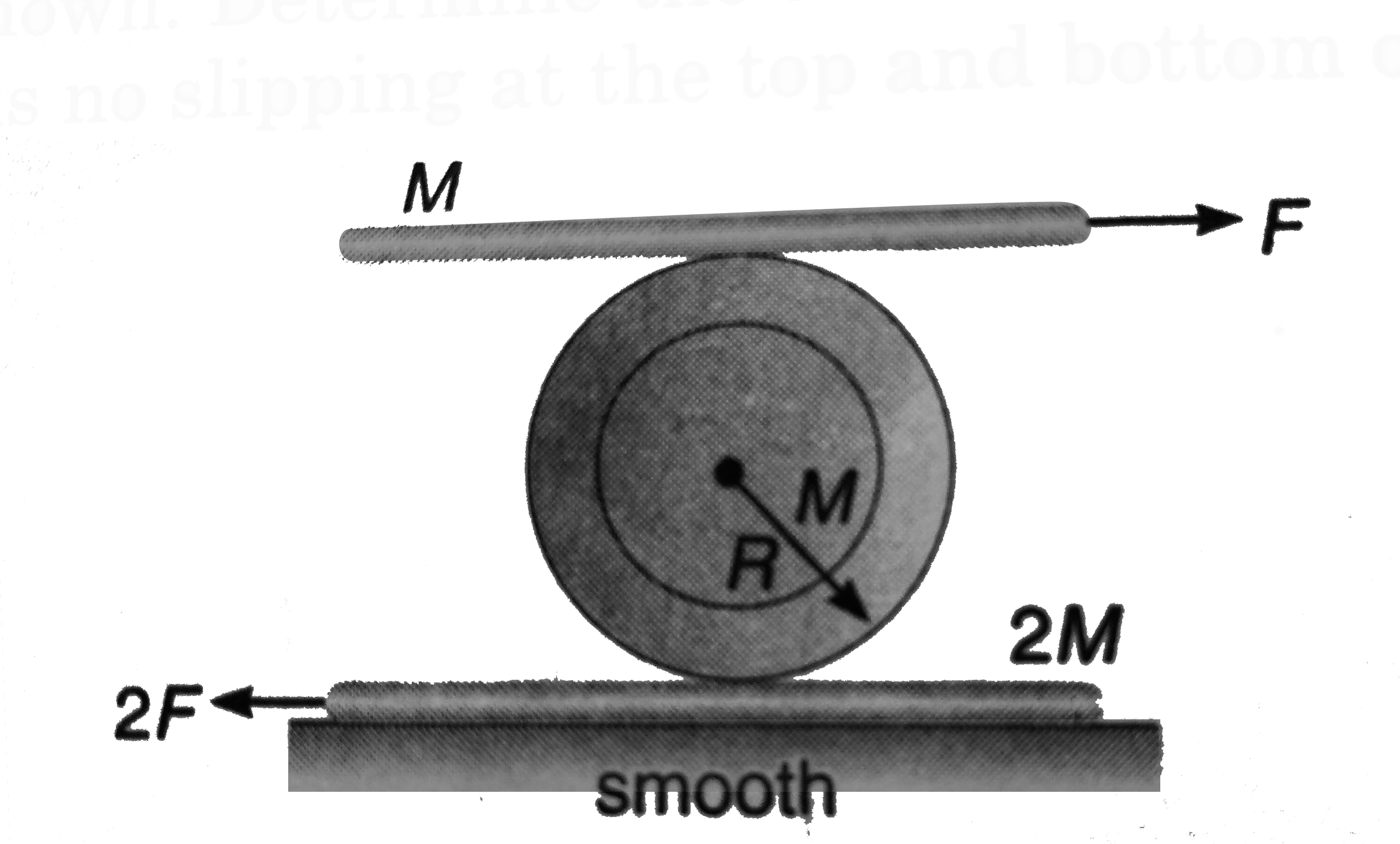
A cylinder is sandwiched between two planks. Two constant horizontal forces F and 2F are applied on the planks as shown. Determine the acceleration of the centre of mass of cylinder and the top plank. If there is no slipping at the top and bottom of cylinder.View SolutionConsider a cylinder of mass M and radius R lying on a rough horizontal plane. It has a plank lying on its top as shown in the figure. A force F is applied on the plank such that the plank moves and causes the cylinder to roll. The plank always remains horizontal. There is no slipping at any point to contact.
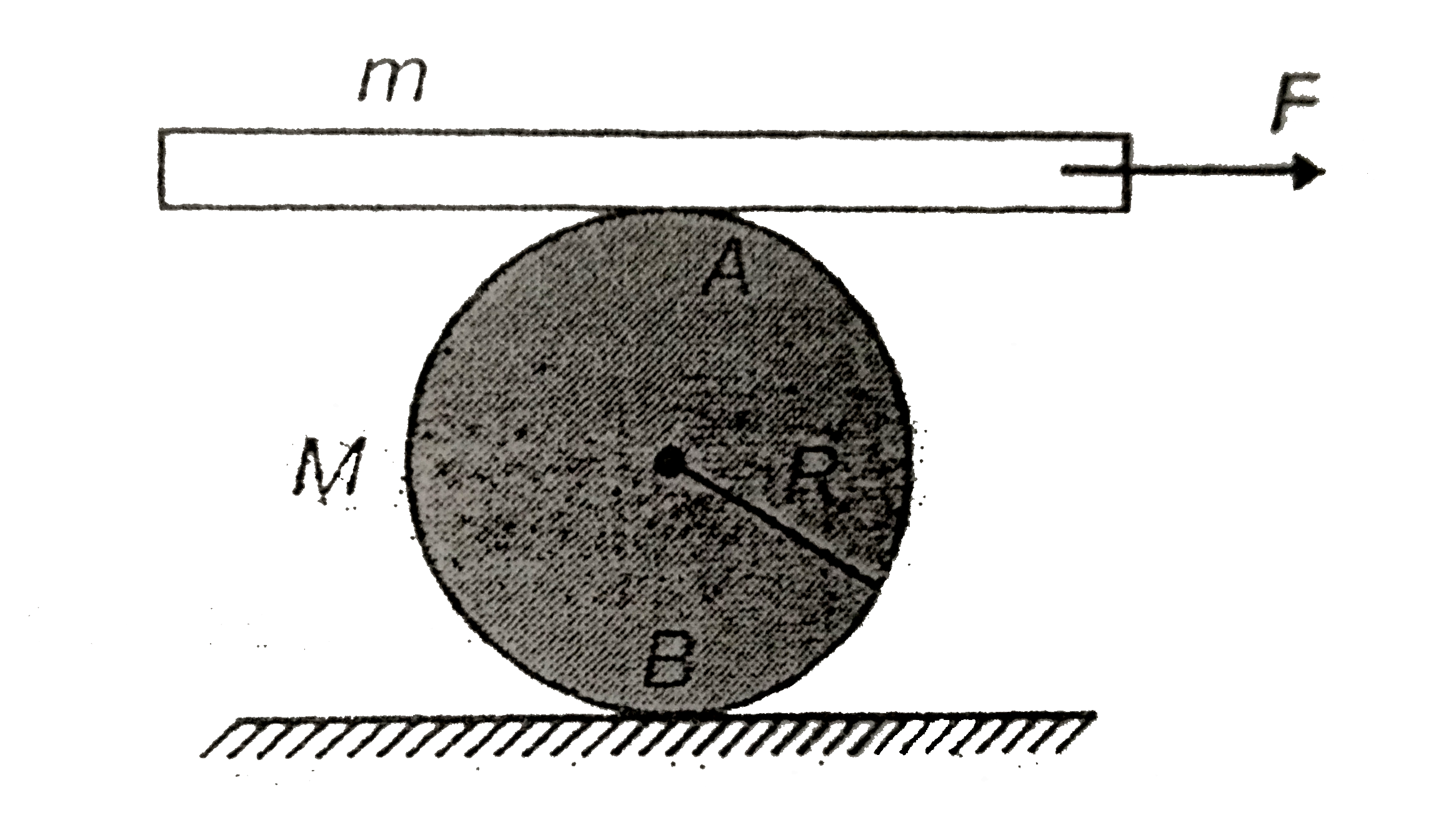
(a) what are the directions of the fricition forces acting at A and B on the plank and the cylinder ?
(b) Calculate the acceleration of the cylinder.
(c) Find the value of frictional force at A & B.View SolutionA solid sphere of mass m and radius R is placed over a plank of same mass m. There is sufficient friction between sphere and plank to prevent slipping.When a horizontal force F is applied at centre of sphere, acceleration of the plank is
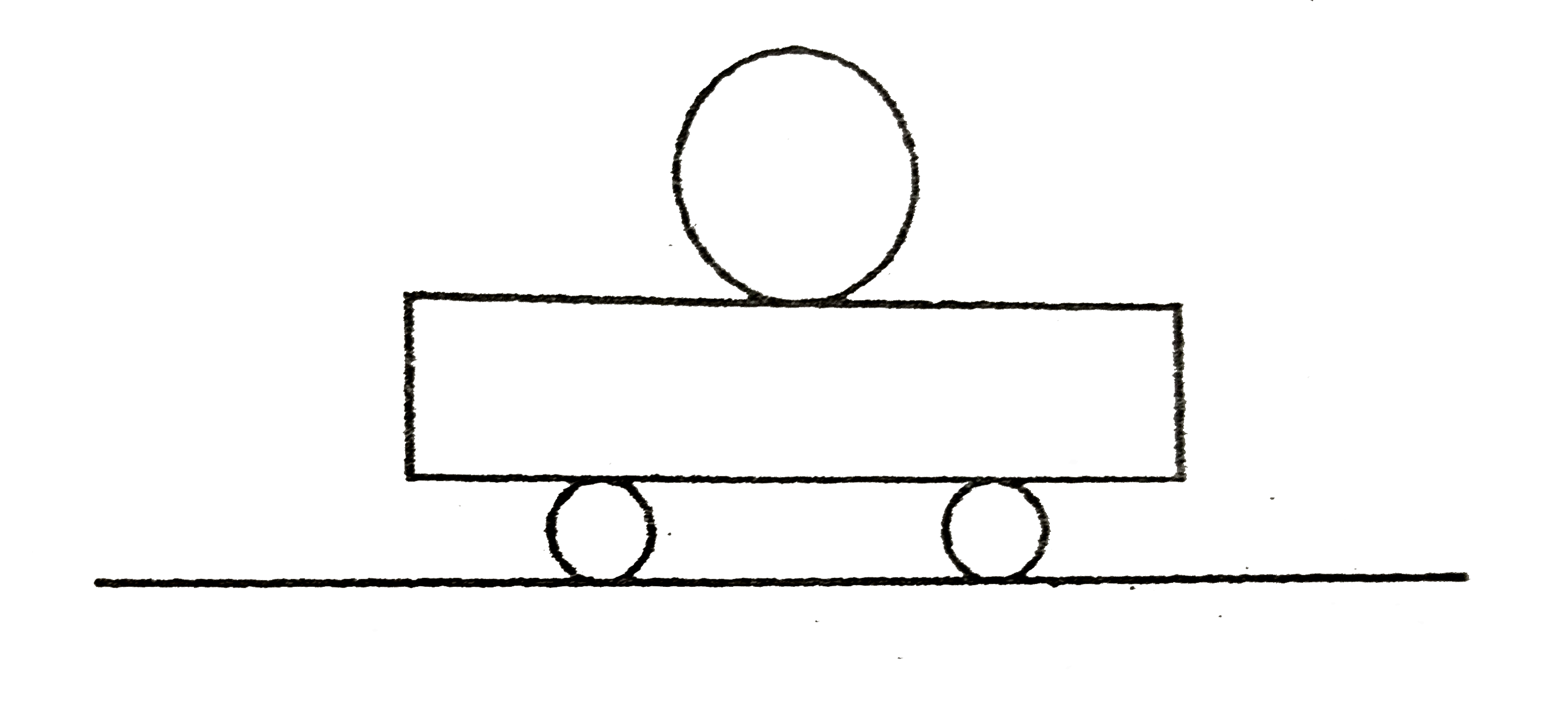
View SolutionA disc of mass m and radius R is placed over a plank of same mass m. There is sufficient friction between disc and plank to prevent slipping. A force F is applied at the centre of the disc.
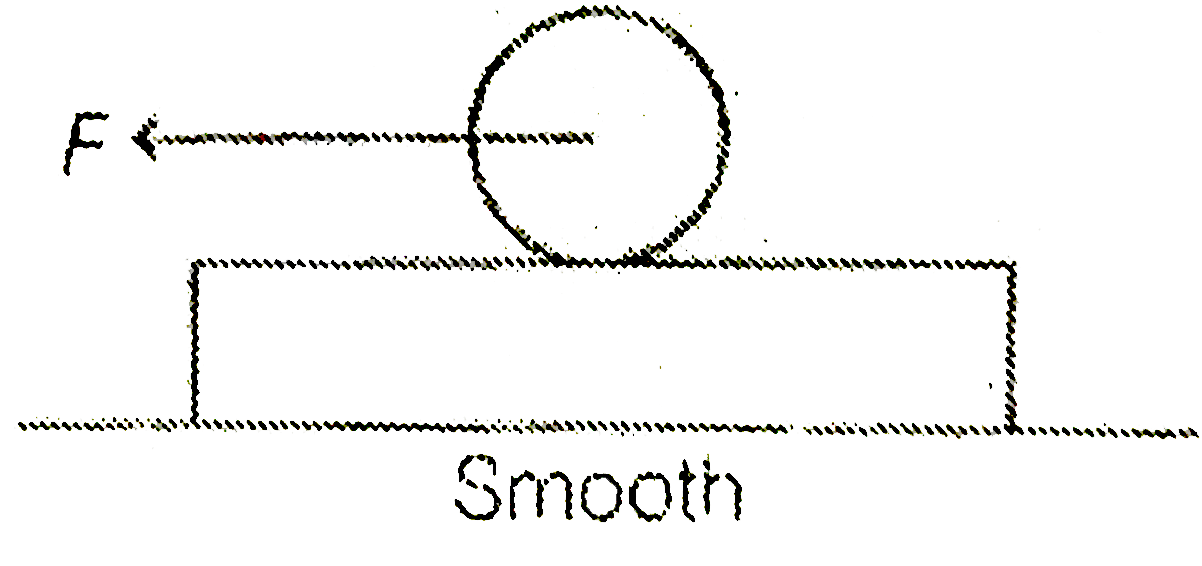
Acceleration of the plank isView SolutionA sphere of mass m and radius r is placed on a rough plank of mass M. The system is placed on a smooth horizontal surface. A constant force F is applied on the plank such that the sphere rolls purely on the plank. Find the acceleration of the sphere.
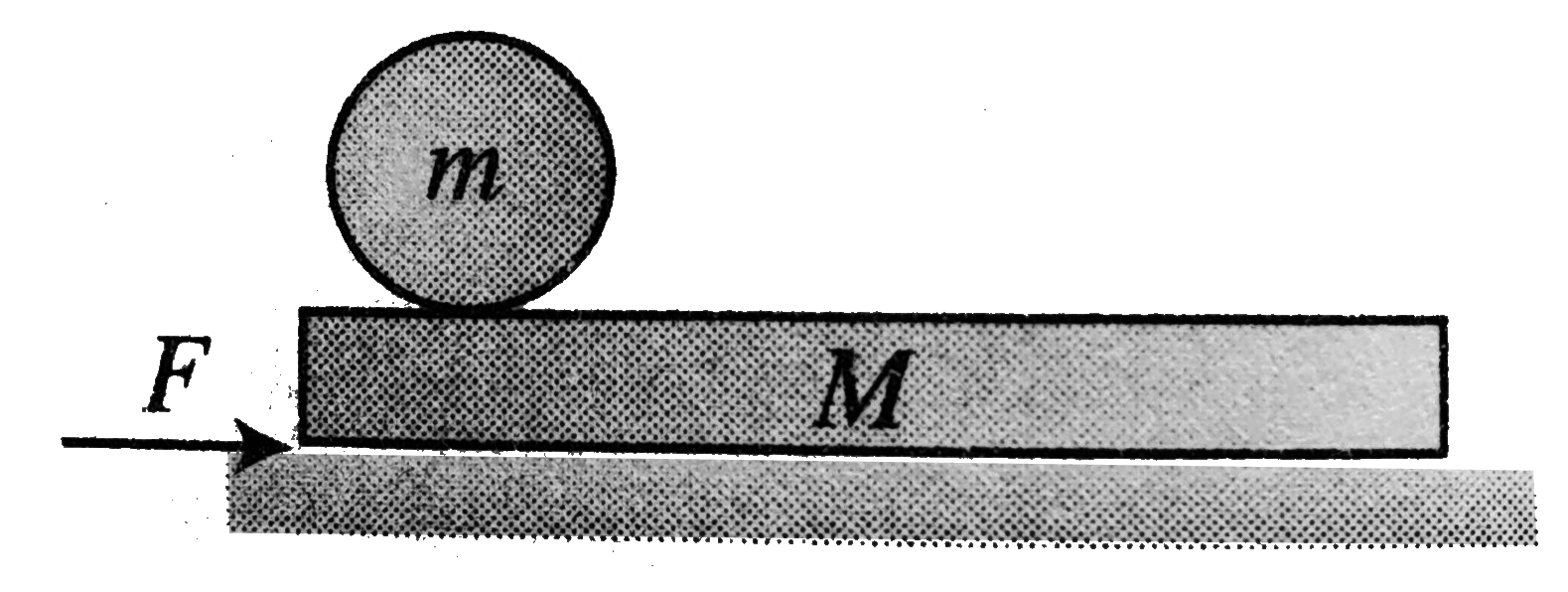 View Solution
View SolutionA man of mass m is standing at one end of of a plank of mass M. The length of the plank is L and it rests on a frictionless horizontal ground. The man walks to the other end of the plank. Find displacement of the plank and man relative to the ground.
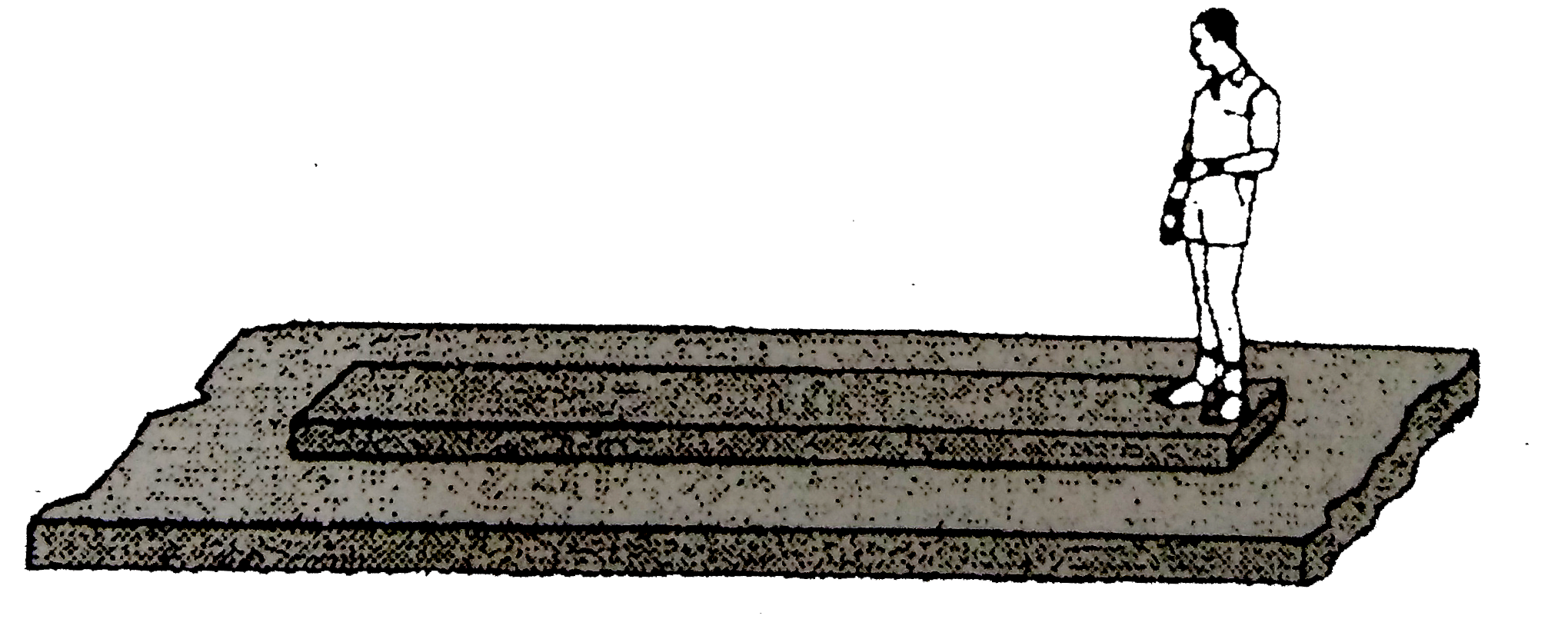 View Solution
View SolutionThree block of masses m1,m2 and m3 kg are placed in contact with each other on a frictionless table. A force F is applied on the heaviest mass m1, the acceleration of m2 will be
 View Solution
View Solution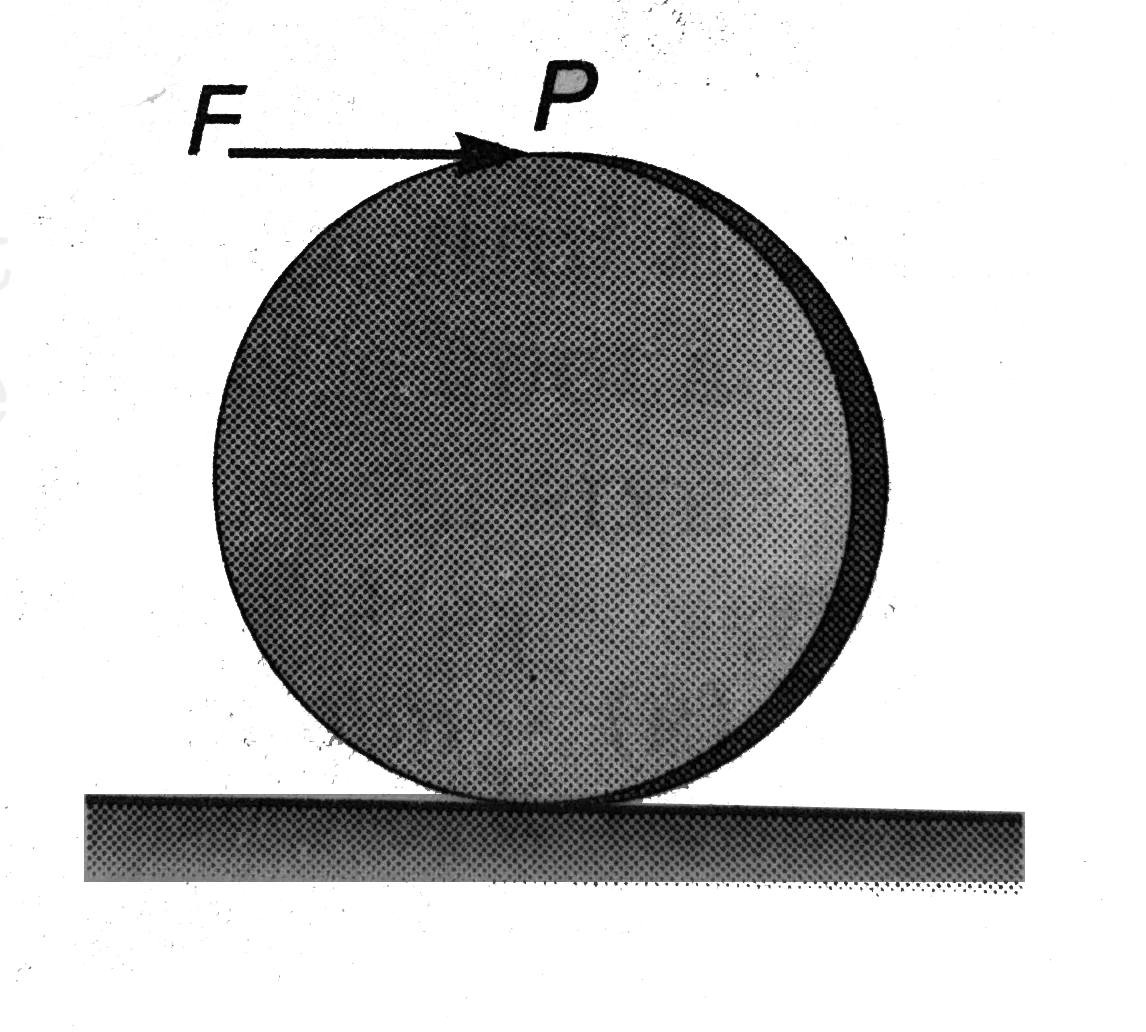
A uniform solid cylinder of mass m and radius R is placed on a rough horizontal surface. A horizontal constant force F is applied at the top point P of the cylinder so that it start pure rolling. The acceleration of the cylinder isView SolutionA small block B of mass m2 is placed on another block A of mass m1 A constant horizontal force F is applied to the block A. All the surfaces are assumed to be frictionless. Find the acceleration of center of mass of the system
View Solution
